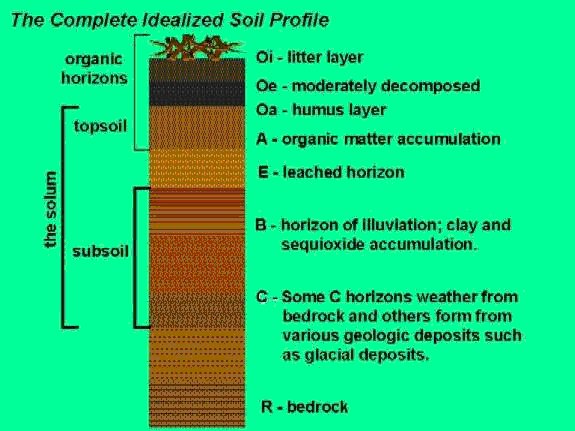Introduction to Soils
The macroclimate and microclimate factors discussed in the previous section determine the above-ground environmental conditions that affect the performance of NTFCs. These factors also have profound effects on the below ground environment. Long term rainfall and temperature patterns affect the cycling of mineral nutrients and organic matter that are important components of the soil environment.
Unlike in conventional agricultural systems, it is not practical to intensively manage forest soils by plowing, cultivating,
irrigating, fertilizing, or otherwise amending them. Nevertheless, understanding the soil characteristics and limitations on
your forest site is important in the design of your forest farming system. Therefore evaluating the characteristics of your
soils is a key component of the site assessment process.
Before conducting the various soil assessment exercises that we recommend, it is important to understand that soils are very
complex associations of organic and inorganic components. They are not uniform from top to bottom. Soil scientists speak of
soil horizons which are layers of differing “age” and composition. The figure below illustrates this concept. Keep in mind
that horizonation varies considerably in different soil types.

A brief explanation of soil horizonation. Not all layers are necessarily present in all soil types and the relative depth of each horizon will vary among soil types.
|

